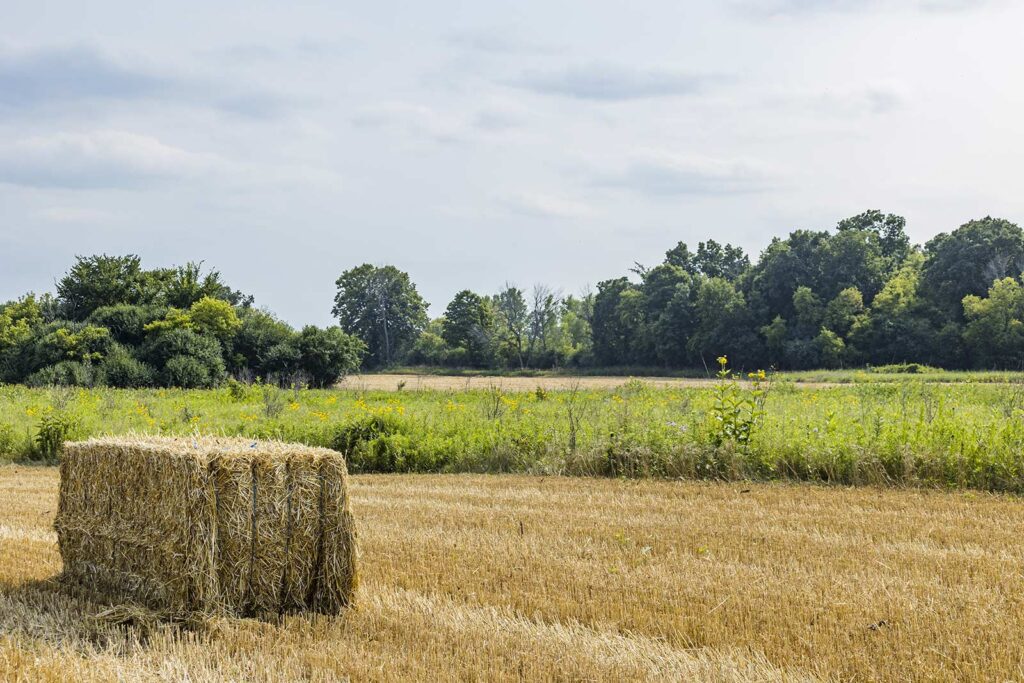When beginning your contract with the Conservation Reserve Program (CRP), you may have questions regarding which types of farming practices are best suited for maximizing the benefits of the program. Through the Clean Lakes, Estuaries and Rivers (CLEAR) Initiative established by the CRP, CP-43 Prairie Strips is a new project designed to assist you with creating and maintaining prairie strips on your farmland over other traditional strip designs, such as contour buffers or grassed waterways. Due to the diversity of plant species used, complex root systems, and stiff-stem plants that can endure heavy rainfall, prairie strips have shown to be most favorable type of strip for both farmers and the environment. Creating prairie strips on your land through CP-43 is an excellent way to reduce soil erosion, improve water quality, and provide wildlife habitat.
What Are Prairie Strips?
Prairie strips are a tool used in CRP to improve both the operation and integrity of your cropped land. Per CRP guidelines, prairie strips are strips of land, between 30 and 120 feet in width, situated within rows of cropland. Grasses, wildflowers, and other diverse vegetation are planted within these prairie strips, to reduce soil erosion and improve water quality on your land, as well as to provide food and cover for wildlife. These strips can account for up to 25% of your cropped acres per tract, and can be planted in low-yielding areas of cropland, including the edges of fields, within the field itself, in terrace channels, and alongside waterways and pivot corners.
How Do Prairie Strips Reduce Soil Erosion?
Incredibly, planting only 10% of a field with prairie strips has been shown to reduce the loss of soil up to 95%. Since prairie strips typically use stiff-stemmed grasses with deep roots, such as Indiangrass, big bluestem, little bluestem, and other types of wildflower species, these grasses hold up to rainfall much better than more weak-stemmed grasses used in other types of strips, like smooth brome and orchard grass. Due to their ability to stand up to heavy rain, stiff-stemmed grasses planted on prairie strips are extremely efficient at reducing sediment movement and water flow.
How Do Prairie Strips Improve Water Quality?
Overall, planting prairie strips has shown to reduce water runoff by up to 44%, including a 90% reduction in phosphorus runoff and an 84% reduction in nitrate-nitrogen runoff. By reducing the amount of these harmful nutrients from entering waterways, prairie strips provide safer, cleaner water for crop production, wildlife habitats, and even drinking water.
How Do Prairie Strips Provide Wildlife Habitat?
With the diverse species of grasses and other plants used, prairie strips provide both food and cover to wildlife in the area. Planting prairie strips boosts the number of native wildlife species, including birds, mammals, and insects on your farmland. Pollinating insects, as well as crop pest deterrents like lady beetles and lacewings, thrive on this type of diverse land, which can lead to increased crop yields.
What Are the Economic Benefits of Implementing Prairie Strips?
Utilizing CP-43 Prairie Strips practices on your farmland is a simple, effective way to increase the environmental and economic benefits provided by the CRP. In fact, the benefits are disproportional to the cost and effort of implementing your prairie strip project, making the adoption of CP-43 practices an easy choice. CRP provides several financial benefits for farmers interested in CP-43, including 10-15 years of annual rental payments, up to 50% cost-share benefits for the establishment of CP-43, a sign-up incentive of 32.5% of the first years’ rental payment, and a 5% Practice Incentive Payment.
If you’re ready to start establishing your CP-43 Prairie Strips practice with CRP, don’t hesitate to reach out to us at FDCE today. We are here to guide you in every aspect of the CRP process, from seed purchasing to documentation, ensuring you will be able to reap the program’s benefits as proficiently and painlessly as possible.

